Varangia
Varangia is a large peninsula in Auloa extending from southeast Férulad. Today, it is known throughout most of the continent as Varskoga, after the human settlers that colonized the region in the earliest years of the Sundered Era. It is a highly rugged and often inhospitable land, filled with deep conifer forests, barren tundra, steep fjords, and mountains perpetually locked in frigid glaciers.
The peninsula is also the southernmost landmass in all of Holos. Summer days stretch close to midnight and winter nights seal the skies in darkness for nearly a month. It is framed on either side by freezing oceans; the Brinewater Bight in the west, and the Varangian Sea and Argent Ocean beyond in the east. Where they merge along the peninsula's southern extremes, the ocean's surface fully freezes, creating a vast expanse of deadly white.
Though it remains sparsely inhabited, the Sundered Era has brought about the largest population boom in Varangia's history. The dominant culture; the Varskogans, a largely human ethnicity; coexist and contend with several other groups including goliath nomads, giant enclaves, goblin and orc tribes, and the remnants of the Jagat dwarf clans. They are relatively new to Auloa but have developed a unique culture that has become a source of great interest and fear throughout the continent.
Etymology
The Varangian Peninsula gets its name from Palladian sources dating back to the 7th Century PE. These Palladian geographers described the region as the most inhospitable and savage land in all the world. The Late Classical Celestial word Varengia appears derived from the Féruladic words vár, meaning "fierce"; and gengi, meaning "giants". The name remained in official Imperial documents as well as popular literature throughout the Late Palladian Era. The goliath, giant, goblin, orc, and dwarf cultures that inhabited the peninsula during this period did not have a word for the region as we do today. When the first human migrants arrived on the peninsula from the south of Teroa, they quickly adopted the Old Varangian tongue with only slight modifications. They became known as the Skoga, a term endowed upon them by the Old Varangian speaking coastal dwarf communities. In Old Varangian, skøga refers to the Argent Ocean, and specifically invokes images of the vast, churning sea. When referred as skøgar, the humans appear to have relished this moniker and added to it, calling themselves Várskøgar, essentially "fierce ones of the storming sea." This terminology helped unite the Skoga humans into a unified culture and allowed them to better conquer the indigenous dwarves and goliaths.Geography
The Varangian Peninsula extends south before curving east towards the Argent Ocean. Its bowed shape is often remarked to look like a tail, arm, flipper, or long-toed foot. The place where it bends is known as the Crook, and much of the peninsula's interior beyond is considered inhospitable to most mortals.
The Varangian Peninsula is split by two great mountain range running down the center of its landmass. The Varangian Range runs north to south while the Bluefrost Mountains curves west to east, following the bend of the peninsula. Though referred to as two distinct regions, these two ranges are in fact ridges of the same mountain range and were uplifted by the same geological events.
The Varangian Range is older and its peaks are not as tall as those found in the Bluefrost Mountains. Both have seasonal glacier activity that continually carve the many vales and fjords that make the region famous. These glaciers feed cold water streams and rivers that nurture the many conifer forests and brisk meadow lands that blanket the valley floors.
Along the inner curve of the peninsula, the vast mountains of the Varangian Range give way to rolling hills, and eventually low-lying flatlands. These lowlands and fjords contain much of the region's biodiversity. Within the Varangian Sea itself are a number of scattered islands and archipelagoes with varying degrees of habitability.
Ecosystem
Varangia has a number of distinct biomes. These include fertile alpine pastures, hardy conifer forests, mixed-leaf woodlands, highland bogs and moors, cold coastal marshes, barren passes, windswept tundra, imposing glaciers, and snow capped mountains.
Ecosystem Cycles
Due to their elevation and latitude, the peaks of the Varangian Range are capped with snow most of the year. Each Star's Favour, their glaciers creep down the vales and slopes towards the lowlands, carving the cliffs and further eroding the landmass.
By contrast, the Bluefrost Mountains are largely crowned in ice year round, and its glaciers descend with remarkable speed. Locals often describe to them as "hungry," and many attribute the harshness of the winters here to the ice giant god Thenn. Only lowlands on the side of the Bluefrost Mountains have any growing season at all and it is limited to a meager four months.
Climate
Varangia's extreme southern latitude means that the peninsula has great seasonality. Despite this, most of vales and lowlands have a temperate climate. This is due to the warm waters of the Greenfollow sea current. The coastal plains around the Crook and north shores have a marine coastal climate, with cold winters and heavy precipitation in the summers. The interior surrounding the Varangian Range has a humid continental climate which gives way to a subartic climate at further elevations and further south. The Varangian Range blocks some moisture further south, leading to even colder winters. The Varangian Range itself has an alpine tundra climate while much of Bluefrost Mountains is classified as an alpine subartic tundra.
Fauna & Flora
Much of Varangia remains untamed wilderness, where wild beasts and monsters roam with abandon. The usual taiga-endemic creatures; deer, elk, wolf, hare, fox, ferret, moose, beaver, brown bear, black bear, lynx, wild boar, otter, badger, squirrel, and vole; live in many of the mountain valleys and coniferous forests.
The perilous mountain passes are home to a unique species of large predatory feline known as the crag cat. Here they prey on wild markhor, big horn sheep, small mammals, and unsuspecting mortals. Feral horses are uncommon as few mortals keep them over sturdier mounts like markhor or reindeer. In the south, polar bear, reindeer, musk ox, white fox, and snowy hare eke out a hardy existence.
Like many wild places, gigantic beasts can be found in the right conditions. Giant elk, giant weasel, giant boar, giant spider, and others prowl hidden groves and grottos. Mammoths were said to once have called Varangia home but are believed to have died out at the beginning of the region's last warming period.
In the ocean, large sea mammals call the frigid environment their home including leopard seals, rorquals, orcas, and cold water dolphins. Fish are plentiful—sturgeons, eels, herring, pike, cod, perch, lampreys, salmon, catfish, as well as gurry and goblin sharks. Squid and octopus also inhabit these waters as do the flightless great auks.
In the sky, Varangians can see giant and common eagles, owls, gulls, terns, swans, corvids, geese, ducks, quail, grebes, doves, swifts, cranes, albatross, storks, gannets, puffins, snipes, osprey, buzzards, woodpeckers, sparrows, larks, martins, starlings, robins, and thrush. Giant eagles and giant owls are well attested while giant bats are quite rare. Giant ravens are said to appear in times of grave omen.
More interesting perhaps, are the more exotic creatures of Varangia. Giant octopus frequently inhabit the old docks and harbors of Varskogan ports. Dire wolves and worgs are more common here than in other parts of Auloa, and winter wolves regularly patrol the Bluefrost Mountains. In the deeper parts of the Brinewater and the Varangian Sea, aboleths plot their return, sea serpents ply the island channels, and the infamous krakens prey upon unsuspecting sailors.
Many claim the woods are protected by fey spirits and treant wardens. Owlbear stalk the forests and woodlands. Meanwhile gryphons, harpies, rocs, and perytons circle from above. Yetis, known as locally as howler, prowl sheer mountain cliffs and occasionally remorhazes will strike from their icy burrows. White and silver dragons have been spotted in the Bluefrost Mountains as well, and bronze dragons regularly soar past the high cliffs along the coastline.
Natural Resources
Varangia's vast wilderness is rich in resources and raw materials. Much of northern Varangia is forested, with many valuable hardwoods such as oak, walnut, ash, and aspen growing in abundance. Other plants are also collected for their medicinal qualities such as snowberry, mistletoe, holly, and tundra cotton.
Both dwarf and stone giant communities are export quarried stone both for use in construction as well as stone carving. Iron is quite plentiful and can be found in both the mountains and the lower hill country. These mines also uncover small deposits of lead and gold in Upper Varangia and copper, silver, and zinc in Lower Varangia.
The mountains do not contain many gemstones, but amber and garnet are found with some regularity. It is said that the dwarves of Alfhalda mine for mithril and other precious metals but their own merchants claim such mines dried up well before the Sundered Era.
Varangia's many wild beasts provide many resources for enterprising hunters and trappers. Deer are the most commonly hunted game, providing food as well as clothing and leather and even tools made of antler and bone. Wolf, bear, and fox are also trapped for their pelts and as a protective measure.
The Varskogan fur trade is a critical part of the economy, and the cornerstone of most settlements' export market. Mink, ermine, beaver, and otter are particularly prized and have been largely hunted out of the Nederrun River Valley.
Fish is an important part of most Varskogans' diets and whalers hunt porpoises and rorquals for ivory and oil. Seals and walruses are also hunted for their skin and tusks and in the furthest reaches provide an important source of meat.
One highly unique resource is everfrost, a kind of elemental ice that remains cold and frozen even when exposed to high temperatures. Everfrost is an important component in alchemy and arcane artifice and is quite rare in most parts of Holos. However, the glaciers of the Bluefrost Mountains have the consistent subzero conditions necessary to regularly produce the substance, making them largest source of everfrost in the southern hemisphere.
History
Dawn Era
Among the many peoples that have inhabited Varangia over the centuries, many myths and legends have arose that purport to explain much the peninsula's unique topography.Dwarvish Origins
Dwarves and Zwaists believe that the Varangian Range and the Bluefrost Mountains are the remains of one of the fabled Nine Mountains that once held up the heavens. During the War of the Dawn, the mountain was destroyed and its remnants formed into the alpine landscapes we know today. To rule this rugged country, the builder god Zwakhasis appointed the line of Alalgar, one of the legendary Nine Lineages of the dwarves. From them came many clans and communities some of which ventured out to settle new lands as others remained behind to develop their own unique cultures.Ordning Traditions
According to followers of the Ordning, the entire continent of Auloa was once a great fish or whale called Hrygmálr. During the Dawn Era, the creator god Jötu hooked and slew Hrygmálr, similar to how the Gloriae of the Heavenly Council slew the Voidcreature, Sharun-sharek. The body of Hrygmálr became the land, and from its body, Jötu and his siblings created the rest of the Material Plane. In Varangia, it is said that the mountains that form the Varangian Range and the Bluefrost were either Hrygmálr's spine or sometimes the bones of his flipper. Varangia became a home for the first jötunðar, and was for a time ruled directly by the Ordning gods themselves. According to Ordning legend, when the War of the Dawn began, the gods of the giants faced the Unspoken gods alone and fought them directly in Auloa. They assert that the Dread Dragoness Valdra was not sealed beneath the planet's crust but put to sleep by the Seeress goddess Vaynera. As a result, much of Varangia's topography still bears the scars of this great conflict and has gained others in the course of later divine conflicts.Palladian Era
Early Palladian geographers knew of a land to the far south in Auloa that was said to be covered in ice and snow for half the year and home only to man-eating giants. Later expeditions more or less confirmed this fact, though it also revealed the presence of the Throne of Jagat, an ancient lineage of dwarves that claimed to have inhabited the region since the First Intermediate Period. The Jagat dwarves claimed descent from the Line of Alalngar, but they were not direct successors. Their predescessor cultures have been lost to the ages, but they appear to have maintained an uneasy coexistance with the various goliath tribes and giant groups in the area. By the Late Palladian Era, the Jagat had established fourteen cities scattered across the peninsula, each paying fealty to the Jagat capital. The exact name of this capital has been lost to time and is only remembered in poetry as the Throne. In the last centuries of the Palladian Era, conflict between the Palladian Empire and the various peoples of southern Férulad had resulted in an increase in orc and goblin migrations into Varangia. The dwarves sought to drive back the incoming hordes, facing them in battle after battle. The combat was particularly horrific and brutal; legends tell of battles dragging on for days in freezing boggy dales as ravens blackened the skies. Much of the fighting occurred where the the foothills of the Varangian Range meet the Nederrun River, and to this day the area is known as the Barrowfields. After several years of grinding conflict, a coup within the Jagat court soon sparked a civil war. The war devestated the Jagat, and even the capital was destroyed and lost. By the time a peace was brokered, seven of the fourteen cities were left in ruin and the populations of the others were gravely reduced. A century later, two more Jagat cities were destroyed by the Blood of Oheilion and a third was abandoned due to famine. By the Sundering Arcana, only four Jagat city-states remained and each was fiercely independent and isolationist. They were called Borribün, Kamakkalar, Nidharhand, and Alfhalda. Over the years, they ceded much of the lowlands and forests to the newly arrived nomads, instead focusing on fortifying their mountain valleys and alpine holdfasts. The Sundering seemed to have been of little interest to the Jagat elite; most seemed to instead focus on their efforts on fortifying their mountain valleys and alpine holdfasts.Arrival of the Skoga
In around 110 SE, the Skoga, the last of the human migrants to participate in the Great Exodus of Man, arrived in Varangia. It is said that their first ships did not make landfall until they'd reached the mouth of the Cairn River where they saw a great pillar of stone carved with mysterious runes. This was the Dreamspire, a landmark believed to have been made by the gods themselves. From here they created their first settlement, Stravanger, and sent word to their brethren to follow them west. Over the next fifty years, some forty-thousand Skoga crossed the Argent Ocean in search of a new life in Varangia. The Skoga were agriculturalists and quickly came into conflict with the migratory goliath tribes that had established themselves in the lowlands. At first, the goliaths managed to keep the Skoga contained to the Lürkndalr, the wooded river valley around the Cairn River. However, after the killing of a goliath chieftain's son, a coalition of a goliath tribes attacked the Skoga at Stravanger. Though outnumbered more than three to one, the Varskogans managed to crush the goliath army. The Varskogans continued to press their advantage, attacking golaith civilians and raiding their auroch herds. One key to their success was sending ships north along the peninsula to the trade routes of the Emerald Straits. With the collapse of the Palladian Empire, trade between Férulad, Mérulad, and Érulad had greatly diminished, but the longships of the Skoga fleet were able to slowly reignite economic activity within the region. It also allowed them to gain access to hardier crops like barley and rye and learn the secrets of ironworking, a technology unknown in their home country. After decades of clashes between the Skoga and the goliaths, an uneasy peace was established between the groups. This became the foundation of the Skoglaw, an agreement first established between the Skoga and the goliaths of _______ Tribe, which eventually evolved into a formalized set of laws and agreements regarding how the mortal peoples of Varangia would interact with one another. It established formal rules for settling property disputes, taking of thralls as well as their rights, the rights and privileges of certain social classes, the duties of jarls, grazing rights for nomadic tribes, religious tolerance and taboos, and even the legitimazation of the Reaving or raiding season. The creation of the Skoglaw deeply changed and cemented many aspects of Varskogan society. The extent to which Skoga society had social stratification or thralldom prior to their arrival in Varangia is unknown. Many have asserted that much of the Skoglaw's perspectives on status, religion, and even raiding actually derive from goliath culture. In particular, it appears as though the previously animist Skoga largely converted to the Ordning religion, coming to venerate specific gods such as Jötu, Frothga, and Styr. Over the course of the next century and a half, the Skoga—now called Varskoga—would continue to expand. This brought them into conflict with the remaining Jagat dwarf lords and their isolationist cities. The Jagat had always opposed the goliaths and so largely refused to respect agreements of the Skoglaw. Ordning religious sites were attacked or defiled and in response, the Varskoga concentrated their Reaving seasons on dwarvish settlements. Over the years, hundreds of thousands were killed or taken as thralls. And while the dwarf lords refused to ask for aid from each other much less trade abroad, the Varskoga had begun to learn the value of metallurgy and arcane warfare. Kamakkalar was the first to fall in 212 SE, its holdfast infiltrated by a the Varskogan hero and shapechanger Ingrirüd Twinskins. Its king, Thróbakkar, was slain watching a horde of berserkers walk through the open gates to plunder its riches. Borribün managed to hold off a siege led by Jarl Dagha Scornheart, whom had gathered an army comprised of both Varskogans, goliaths, and even stone giants. However, an unexpected early blizzard killed half the city's harvest, leading to a devestating famine. When Varskogan scouts returned from the city that spring, they reported grisley scenes of cannibalism among the skeletonized survivors. The Scornhearts, to their credit, allowed the remaining dwarves to go free without fear of thralldom and burned the empty city to cleanse it of the hunger that had consumed it. Unlike the other two Jagat cities, Nidharhand and Alfhalda had begun to experiment with arcane magic. In 239 SE, the Jarls of Stravanger, Clearfrost, and Skiencliff came together to for a Reaving of the Nidharhand hinterland. By the end of the Reaving, the Nidharhand's military forces were severely depleted. Fearing that they would meet the same fates as Kamakkalar and Borribün, the elite of Nidharhand ordered the retrieval of every fallen Nidharhander soldier. When the Varskogans returned the following year, they were horrified to face the very same warriors they'd killed the previous year. The Queen's court wizard, Jüngir—called Bitterbreath by the Varskogans—had reanimated the slain warriors as revenants. The Queen and the rest of Nidharhand had converted to a form of Zwahism that saw necromancy as a sacred and virtuous rite, a way to give a second life of work and service back to the community. When the now undead dwarves faced the Varskogans once more, they crushed the armies of Stravanger and Clearfrost. Among those Varskogans that now followed the Ordning, the Nidharhand cult appeared to have embraced the teachings of Thenn, the Frozen Son. A call soon went out to all Varskoga and even to the faithful goliaths and stone giants. A kingsmoot was held at Stravanger and a young mage named Vokli, whom had studied at the Hall of Deeds, convinced those gathered to vote him High King. For this, he was known as Vokli the Brave. The coalition marched along the north fork of the Cairn River to meet the dwarves and their undead army. At a place called Kesserthain, the Varskogans met their foes and cut down nearly the whole reanimated horde. Yet Jüngir raised the dead Nidharhanders once more, surprising the Varskogans and killing many of them. Again, the Varskogans managed to slay nearly all of the clawing dead only for the necromancer to repeat the foul deed again. Finally, the young Vokli met Bitterbreath and dueled him, ultimately setting the two of them ablaze in a plume of fire. This earned him a new epitaph, Vokli the Burned. Despite the Varskogan victory, many spirits in the Lürkndalr and surrounding foothills had been roused by the Nidharhander's curse. To this day, many of the graves of the Barrowfields contain restless spirits and awoken draugr. With the loss of their necromancer, the undead armies of Nidharhand were released from their bonds. They turned to stalk dwarf and man alike, becoming a terrible scourge throughout all the country. The Varskogans had suffered the death of their own leader and incurred immense casualties. Now bent on vengeance, the Varskogans ignored the roaming revenants and made their way to the now defenseless city state. The Varskogans sacked the city, taking their fury out on every civilian in the most horrific of ways. Out of fear of another rising, they then set the whole of the city alight, with all the remaining dwarves still inside. Any that tried to flee, including children, were cut down. By 250 SE, Alfhalda stood alone as the last Jagat kingdom. Their royal family had sent emissaries to Basceron.Present Day
Today, the Varskoga are the dominant ethnic group in Varangia and control most of the peninsula's arable lowlands. Though united by a common culture—as well as language, traditions, and values—the Varskogan people do not have a centralized political state. The Varskogan culture is largely clan based, with each clan pledging fealty to a chieftain who rules over a given territory. These chieftains are known as jarls and their territories are known as Holds or jarldoms. The number of Holds within Varangia has grown and shrunk over since the first Varskogan landing. Within the last century, the number of Holds has fallen drastically, with power being consolidated into the hands of those Jarls who could finance more ambitious and longer Reavings or those that controlled trade hubs with steady population centers. Today, there are a total of eight Holds, with the Jagat Kingdom of Alfhalda often regarded as the honorary Ninth Hold. Stravanger Hold, ruled from the city of StavangerMaps
-
Varangia (Old)
A physical map marked with some of the most important population centers in the Varangia. Dated to around the year 340 of the Sundered Era.
Much of the Varangian wilds are covered in rugged hill country and dense woodlands
Many trails through the Varangian Range are accessible only part of the year
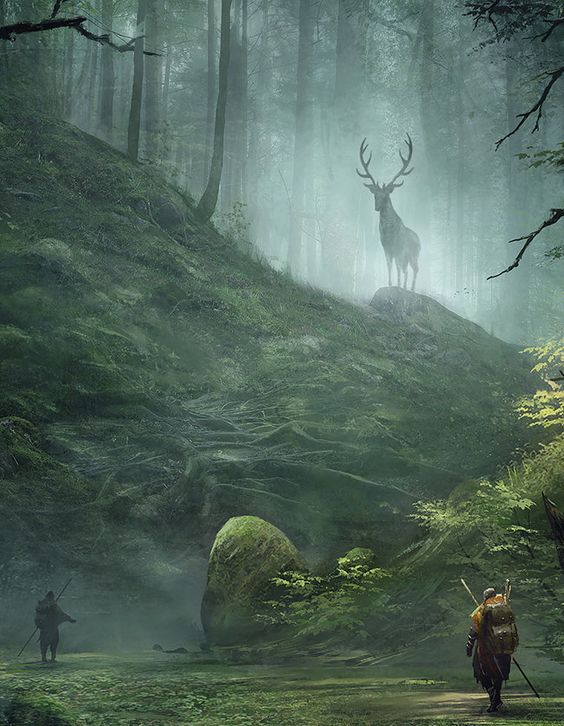
A Meeting In The Woods by Sergey Averkin
Creatures of a gigantic or monstrous nature are unnervingly common in Varangia.
Many communities in southern Varangia live in fear of the winter wolf, a monstrous canine endowed with the power and hunger of winter itself
Everfrost's rarity in Holos but relative abundance in Varangia make it an important export for the region

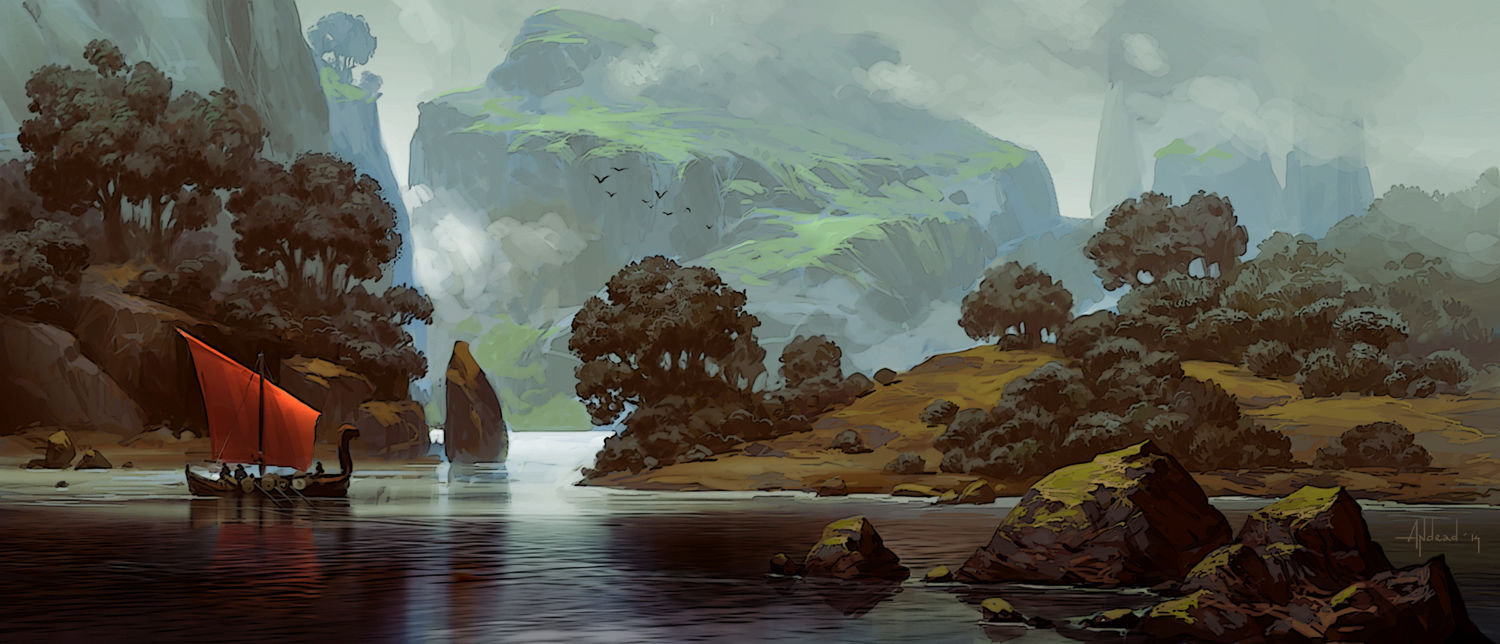

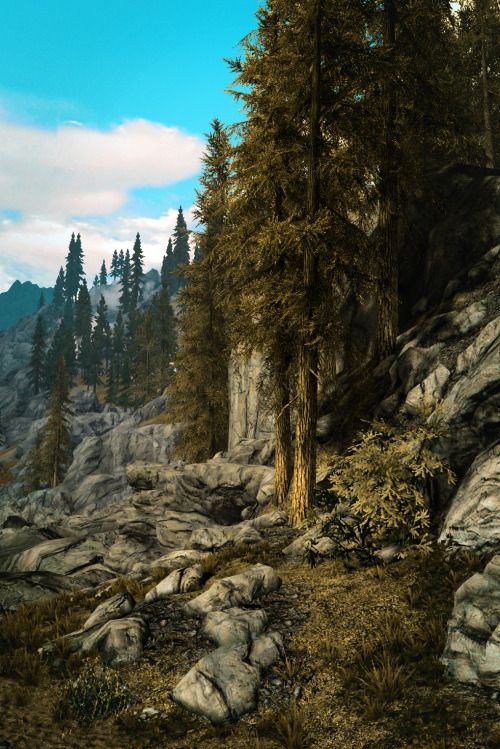
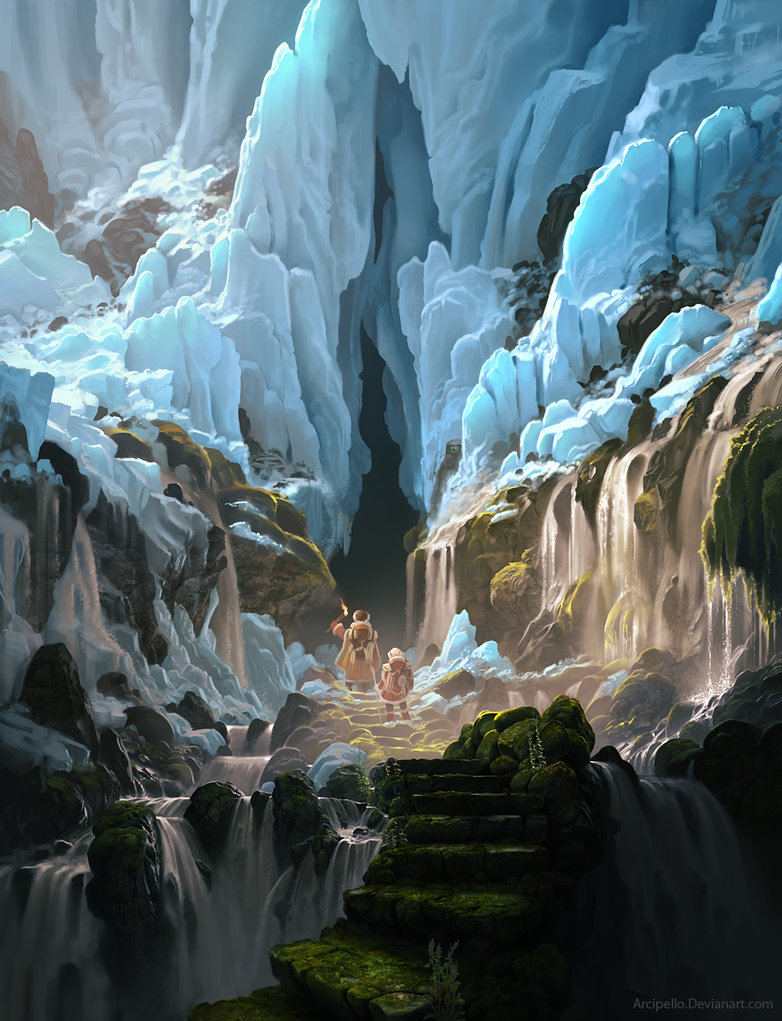
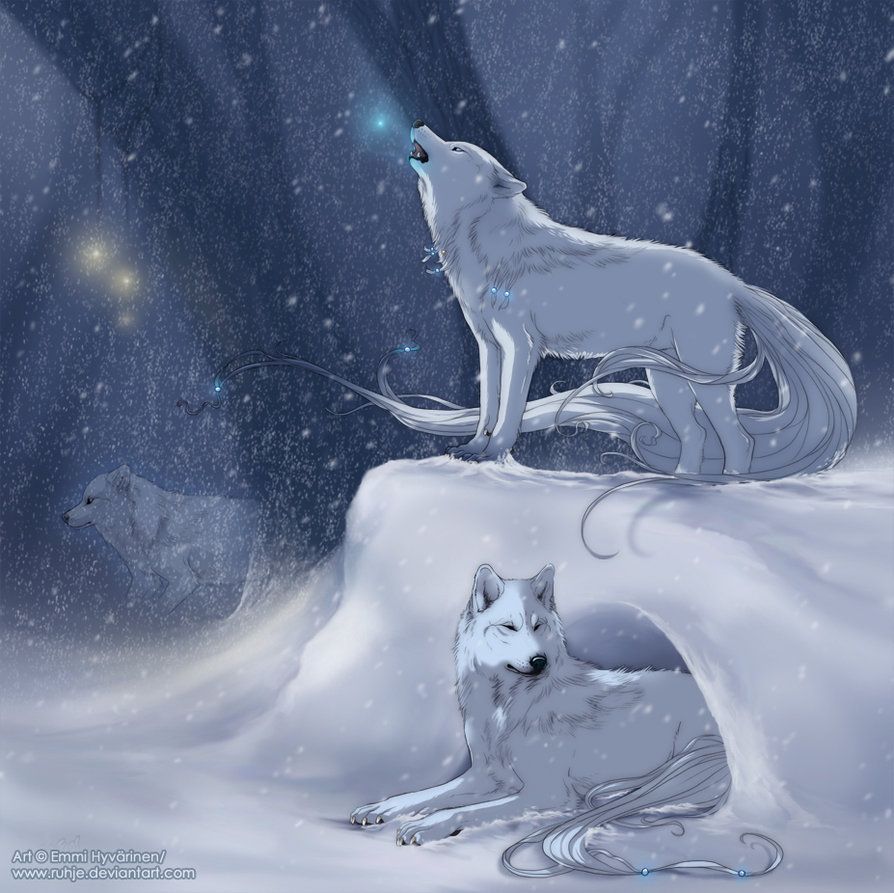
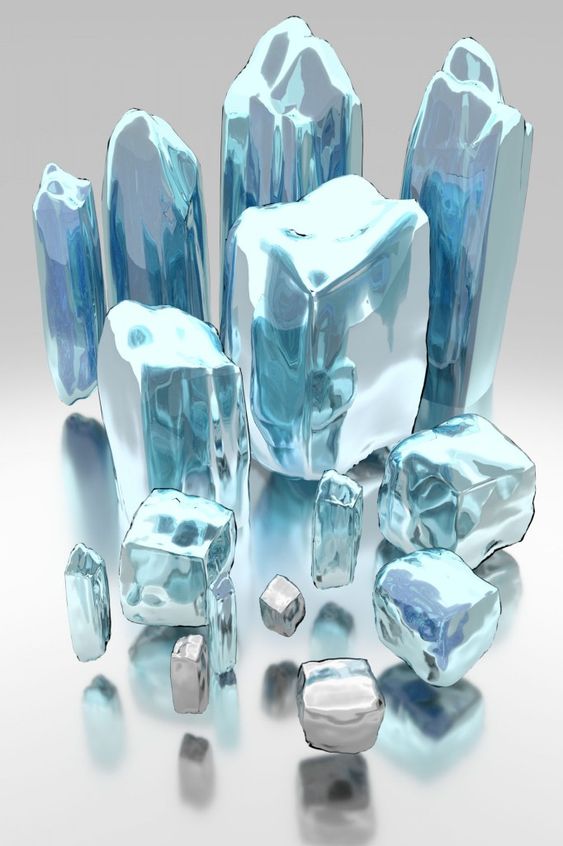
Comments